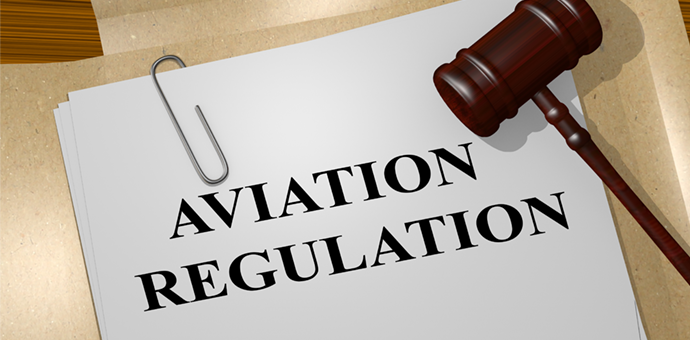Sofema Aviation Services www.sassofia.com considers the training Obligations placed on the Continuing Airworthiness Management Organisation with the Introduction of EASA Part CAMO.
Introduction
EASA Part CAMO Implementation Date – 24 March 2020
Following the Implementation Date – each aircraft must follow either Part-M or Part-ML standard, and any person or organisation involved in continuing airworthiness must comply with Part-M, or Part-ML or both, depending on the scope of activities (related type(s) of aircraft and operation(s)).
Note 1 – In accordance with Article 4 of Regulation (EU) 1321/2014 as amended, after 24 September 2021, there should be no more Part-M Subpart F and Part-M Subpart G organisations.
Note 2 – Part CAMO does not replace Part M, it replaces Part M Subpart G.
CAMO Training Requirements
GM1 CAMO.A.305(g) Personnel requirements introduce Safety Training which is Merged with Human Factors.
(a) The scope of the safety training and the related training programme will differ significantly depending on the size and complexity of the organisation.
Note 3 – How will this be managed and co-ordinated in your organisation?
Safety training should reflect the evolving management system and the changing roles of the personnel who make it work.
(b) In recognition of this, training should be provided to management and staff at least:
(1) during the initial implementation of safety management processes;
(2) for all new staff or personnel recently allocated to any safety management related task;
(3) on a regular basis to refresh their knowledge and to understand changes to the management system;
(4) when changes in personnel affect safety management roles, and related accountabilities, responsibilities, and authorities; and
Note 4 – In the context of safety management, the term ‘authority’ is used in relation to the level of management in the organisation that is necessary to make decisions related to risk tolerability.
(5) when performing dedicated safety functions in domains such as safety risk management, compliance monitoring, internal investigations.
(c) Safety training is subject to the record-keeping requirements in point.
GM2 CAMO.A.305(g) Personnel requirements provide for a Training Syllabus for Initial Safety Training.
The training syllabus below identifies the topics and subtopics that should be addressed during safety training.
The CAMO may combine, divide, or change the order of any of the subjects in the syllabus to suit its own needs, as long as all the subjects are covered to a level of detail that is appropriate for the organisation and its personnel, including the varying level of seniority of that personnel.
Some of the topics may be covered in separate training courses (e.g. health and safety, management, supervisory skills, etc.) in which case duplication of the training is not necessary.
Where possible, practical illustrations and examples should be used, especially accident and incident reports.
Topics should be related to existing legislation, where relevant. Topics should be related to existing guidance/advisory material, where relevant (e.g. ICAO HF Digests and Training Manual).
Topics should be related to continuing airworthiness management and maintenance engineering where possible; too much-unrelated theory should be avoided.
1. General/Introduction to Safety Management and HF
1.1 Need to address Safety Management and HF
1.2 Statistics
1.3 Incidents
1a. Safety risk management
1a.1. Hazard identification
1a.2. Safety risk assessment
1a.3. Risk mitigation and management
1a.4. Effectiveness of safety risk management
2. Safety Culture/Organisational factors
2.1 Justness/Trust
2.2 Commitment to safety
2.3 Adaptability
2.4 Awareness
2.5 Behaviour
2.6 Information
3. Human error
3.1 Error models and theories
3.2 Types of errors in continuing airworthiness management and maintenance tasks
3.3 Violations
3.4 Implications of errors
3.5 Avoiding and managing errors
3.6 Human reliability
4. Human performance & limitations
4.1 Vision
4.2 Hearing
4.3 Information-processing
4.4 Attention and perception
4.5 Situational awareness
4.6 Memory
4.7 Claustrophobia and physical access
4.8 Motivation
4.9 Fitness/Health
4.10 Stress
4.11 Workload management
4.12 Fatigue
4.13 Alcohol, medication, drugs
4.14 Physical work
4.15 Repetitive tasks/complacency
5. Environment
5.1 Peer pressure
5.2 Stressors
5.3 Time pressure and deadlines
5.4 Workload
5.5 Shift work
5.6 Noise and fumes
5.7 Illumination
5.8 Climate and temperature
5.9 Motion and vibration
5.10 Complex systems
5.11 Other hazards in the workplace
5.12 Lack of manpower
5.13 Distractions and interruptions
6. Procedures, information, tools and practices
6.1 Visual inspection
6.2 Work logging and recording
6.3 Procedure — practice/mismatch/norms
6.4 Technical documentation — access and quality
7. Communication
7.1 Shift/Task handover
7.2 Dissemination of information
7.3 Cultural differences
8. Teamwork
8.1 Responsibility
8.2 Management, supervision and leadership
8.3 Decision-making
9. Professionalism and integrity
9.1 Keeping up to date; currency
9.2 Avoiding error-provoking behaviour
9.3 Assertiveness
10. Organisation’s safety programme
10.1 Safety policy and objectives, just culture principles
10.2 Reporting errors and hazards, internal safety reporting scheme
10.3 Investigation process
10.4 Action to address problems
10.5 Feedback and safety promotion
GM3 CAMO.A.305(g) Personnel requirements Identify the requirements related to Competency of the Safety Manager.
The competency of a safety manager should include, but not be limited to, the following:
(a) knowledge of ICAO standards and European requirements on safety management;
(b) an understanding of management systems, including compliance monitoring systems;
(c) an understanding of risk management;
(d) an understanding of safety investigation techniques and root cause methodologies;
(e) an understanding of HF;
(f) understanding and promotion of a positive safety culture;
(g) operational experience related to the activities of the organisation;
(h) safety management experience;
(i) interpersonal and leadership skills, and the ability to influence staff;
(j) oral and written communications skills;
(k) data management, analytical and problem-solving skills.
Sofema Aviation Services www.sassofia.com and SofemaOnline www.sofemaonline.com Provide Classroom, Webinar & Online Regulatory & Vocational Training./
Please email office@sassofia.com and online@sassofia.com for further details
Tags:
Aviation Training, CAMO Training Requirements, EASA Part – CAMO, EASA Part M, Human Factor Training, Human Factors, Safety Management, Safety Training




